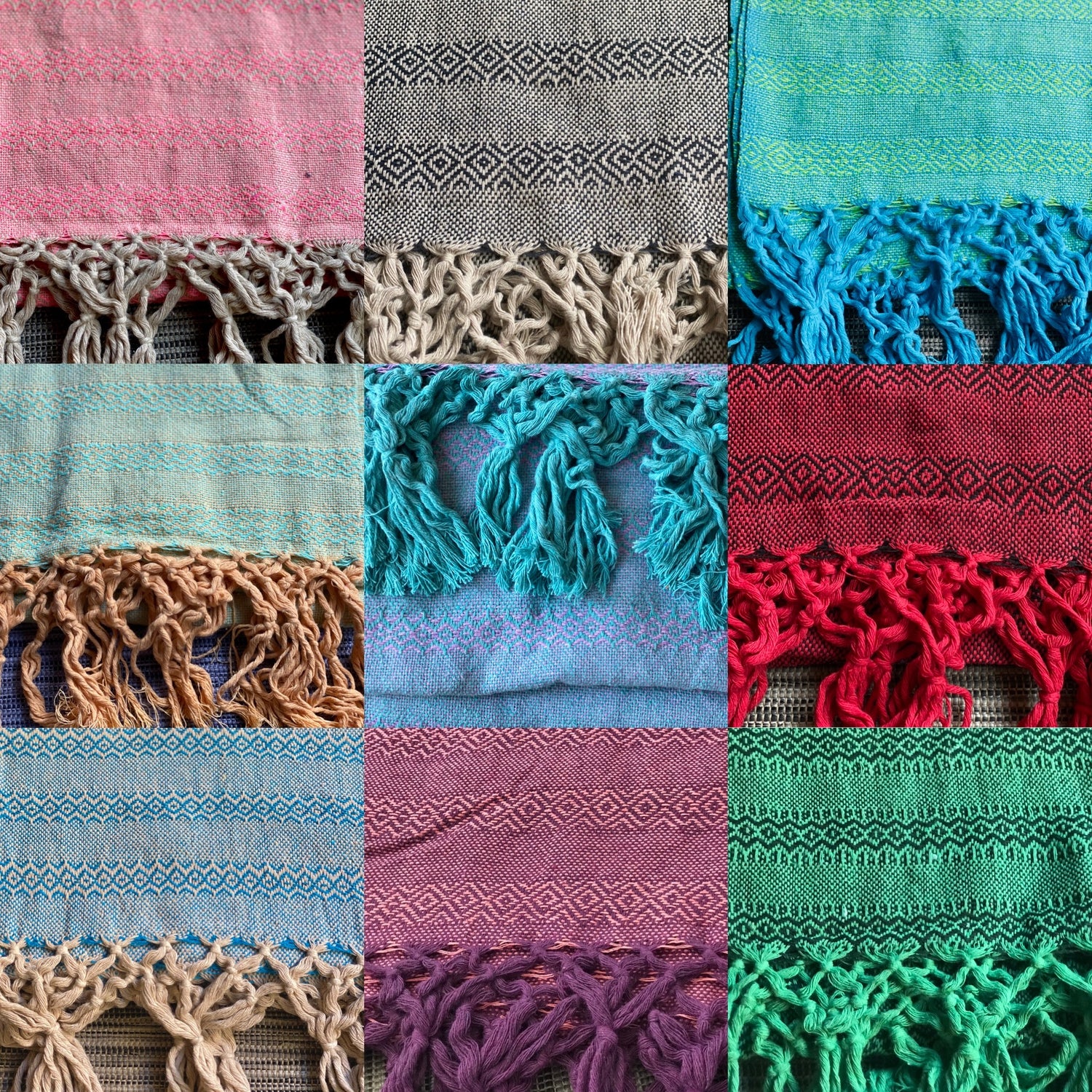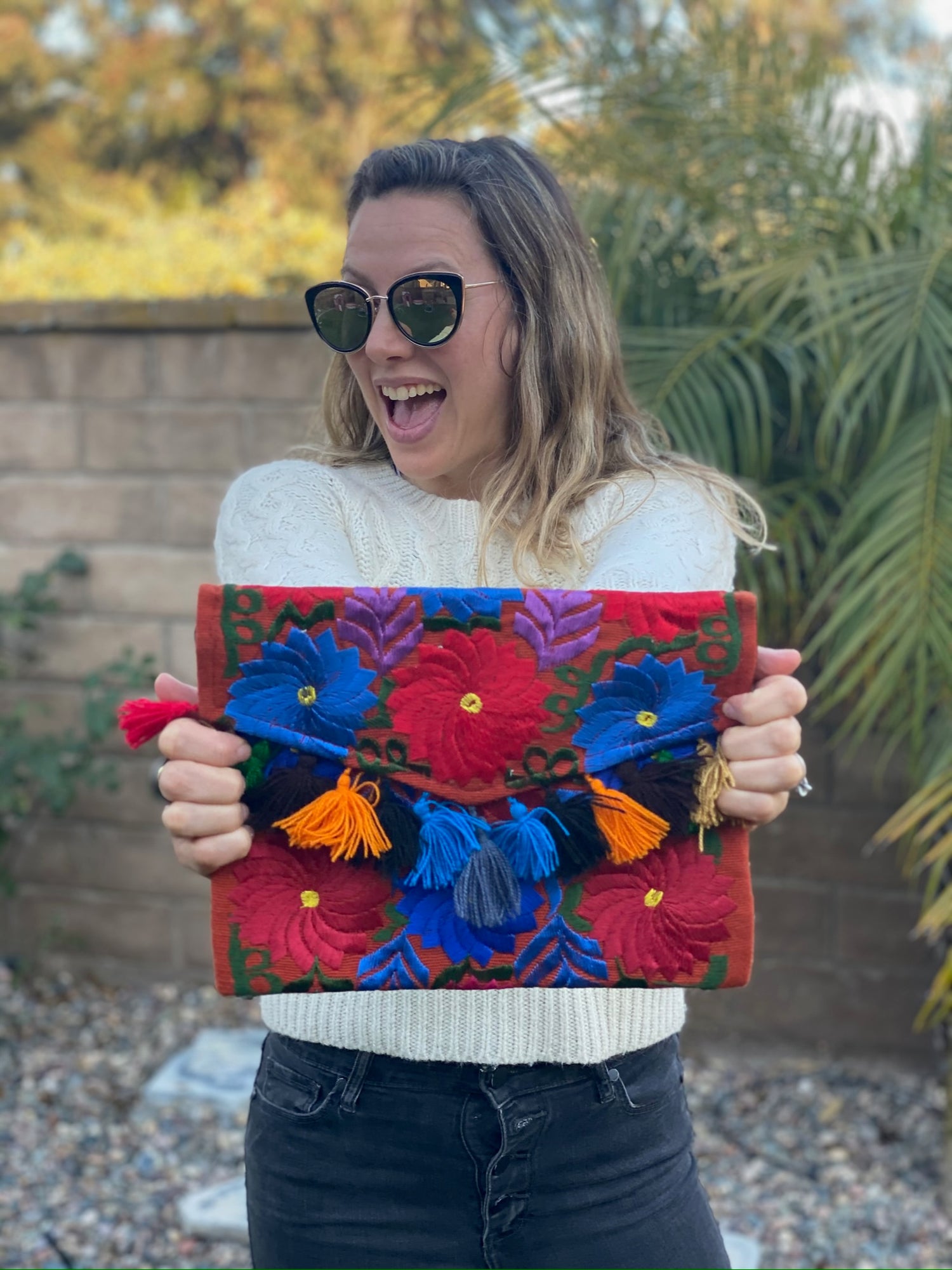In Mexico, rebozos are more than just beautiful garments; they are woven into the fabric of cultural and religious ceremonies. These shawls symbolize tradition, spirituality, and the deep connection women have to their heritage.
Whether used to honor ancestors during festivities or to provide comfort during religious events, the rebozo plays a vital role in reinforcing community bonds.

As you explore the significance of rebozos in religious practices, you'll find that these garments carry both personal and collective memories. They serve as a reminder of the strength and resilience of Mexican women throughout history, connecting past generations with the present.
Engaging with this topic allows you to appreciate the rich traditions that have shaped Mexican culture.
The versatility of rebozos can be seen in many religious ceremonies across Mexico, from weddings to funerals. Each wearing them ties individuals closer to their ancestors and spiritual beliefs. The unique way they are worn and the meanings attached to them reflect the deep reverence held for these important rituals.
Key Takeaways
- Rebozos symbolize tradition and spirituality in Mexican culture.
- They connect women to their heritage and historical significance.
- The garments play important roles in various religious ceremonies.
Historical Significance and Evolution

The rebozo has deep roots in Mexican culture, with its significance evolving through various historical periods. You will find that its role transcends mere clothing, reflecting the social, political, and cultural changes in the country.
Origins of the Rebozo in Mexican Tradition
The rebozo dates back to pre-Hispanic times. Originally worn by indigenous women, it served practical needs like carrying goods and providing warmth. The design often featured traditional patterns unique to different regions.
Over time, it became more than a utility item; it transformed into a symbol of femininity and cultural identity.
As Spanish colonization began in the 16th century, the rebozo's design evolved. European influences blended with indigenous styles. This modernization led to various fabrics and embroidery techniques that reflected Mexico's diverse heritage.
The Rebozo from the Colonial Period to Mexican Independence
During the colonial period, the rebozo gained prominence among women of all social classes. It was a statement of status, often made from luxurious materials. Empress Carlota, wife of Emperor Maximilian I, famously wore elegant rebozos, showcasing their fashionable aspect.
By the time of Mexican Independence in 1821, the rebozo had become a national symbol. Women wore it as they fought for freedom, reinforcing its role in patriotic expression.
As a result, the rebozo was intertwined with the cultural fabric of the independence movement and emerged as a staple in women’s attire.
Iconic Figures and the Rebozo in Mexican History
The rebozo has a notable place among iconic figures in Mexican culture. Frida Kahlo, celebrated for her art and unique style, often incorporated the rebozo into her outfits. For her, the rebozo symbolized her indigenous roots and personal identity.
During the Mexican Revolution, women known as "adelitas" played significant roles, often wrapped in rebozos. These women were not just fighters; they were symbols of strength and resilience. The rebozo served as a banner of their courage, making it a lasting emblem of Mexican heritage and female empowerment throughout history.
Cultural and Religious Roles of Rebozos

Rebozos play a vital part in the cultural and religious life of Mexican women, especially those from indigenous and mestizo backgrounds. These shawls are woven into many important ceremonies and celebrations, highlighting their significance in expressing identity and spirituality.
Rebozos in Indigenous and Mestizo Women's Lives
For many indigenous and mestizo women, rebozos are more than just garments. They serve as symbols of cultural identity and heritage.
Women in regions like Chiapas and Oaxaca often use rebozos in everyday life, demonstrating their practical utility.
In traditional settings, a rebozo can act as a veil, offering not just modesty but also showcasing intricate designs unique to specific communities. These textiles embody pride and connection to one's roots.
Wearing them is a way to honor ancestral traditions while adapting them to modern life.
The Role of Rebozos in Mexican Religious Events
Rebozos hold significant meaning during religious ceremonies such as weddings and christenings. In a wedding, the rebozo can symbolize protection and blessings for the bride. It is often draped over her shoulders, representing the support of her family and community.
During christenings, mothers might use a rebozo to wrap their babies, signifying warmth and care. The colorful designs often carry spiritual meanings, making them essential in these sacred moments.
By incorporating rebozos, women actively participate in rituals, reinforcing their spiritual and cultural ties.
Rebozos in Contemporary Mexican Celebrations
Today, rebozos continue to play an important role in celebrations like Mexican Independence Day. Women proudly wear these shawls to express national pride and cultural heritage.
The act of wrapping oneself in a rebozo during gatherings symbolizes unity and community strength.
In fashion, rebozos have woven their way into contemporary styles, blending tradition with modern expressions. This versatility allows them to remain relevant while connecting generations of Mexican women to their cultural roots.
The rebozo is not just a piece of fabric; it is a living representation of identity, faith, and unity in Mexican life.
Frequently Asked Questions

This section addresses common questions about the role of rebozos in Mexican religious ceremonies. The answers delve into their usage, significance, and what they represent in various cultural contexts.
How is the rebozo used in Mexican spiritual rituals?
In many spiritual rituals, the rebozo serves as a symbol of protection and femininity. You might see it used to envelop participants, creating a sacred space during prayers and blessings.
What traditional significance do rebozos have in Mexican culture?
Rebozos carry deep cultural significance, often representing status and identity. Traditionally, they have been worn by women during important life events, linking them to their heritage.
How has the symbolism of the rebozo evolved throughout Mexican history?
Throughout history, the rebozo has transformed in meaning. Initially, it was a practical garment, but over time, it has become a symbol of resilience and cultural pride.
What are the cultural implications of wearing a rebozo in religious events in Mexico?
Wearing a rebozo during religious events communicates respect and devotion. It signals your connection to tradition and reinforces the spiritual atmosphere of the ceremony.
In what ways do rebozos represent identity and tradition in Mexican ceremonies?
Rebozos reflect personal and collective identity. They often showcase regional styles and colors, highlighting the rich diversity within Mexican culture during ceremonies.
How do rebozos feature in rites of passage within Mexican religious practices?
In rites of passage, like baptisms and weddings, rebozos play a crucial role. They are often gifted or worn to signify the transition and important life changes.




